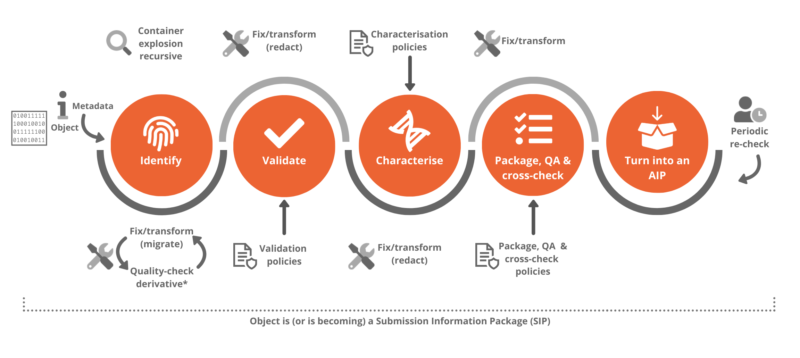OPF Reference Workflow
OPF’s tools address common issues facing many organisations. Together, they form a reference toolset for digital preservation which can be adapted for use in different organisational workflows. We have defined a common workflow for digital preservation and mapped out where our open source products can fit within it. The workflow includes standard preservation actions, but the details, order of processing, and policies may differ by organisation. We focus on the ingest/pre-ingest subset of the OAIS model because our current products address these areas.
A common workflow for digital preservation
Once a user has decided that a digital object should be preserved, the item needs to be catalogued and classified. This is as true with a digital object as a physical object. Each digital object has associated metadata stored alongside it, which must also be catalogued, classified, and stored. The process of cataloguing and classifying has several stages, including identification, validation and characterisation.

Identification
Validation
Characterisation
Packaging, Cross-Check, Quality Assurance, Review
The future
To help us manage a growing number of products and ensure they are fit for purpose for the long term, we have developed a programme of work to enhance the OPF reference toolset. The goal is to enable users to easily adopt our products and incorporate them into their workflow.
We plan to consolidate the number of different elements in our reference toolset and provide a single user interface for our products. Our approach is to create consistency across the toolset and provide a solid foundation on which to build new functionality. In the future, we will offer users a flexible choice of modules and make it more straight-forward to integrate other tools.
By reducing the amount of redundant code and separating out old project infrastructure, we aim to minimise maintenance overheads while taking forward functional, sustainable products.

